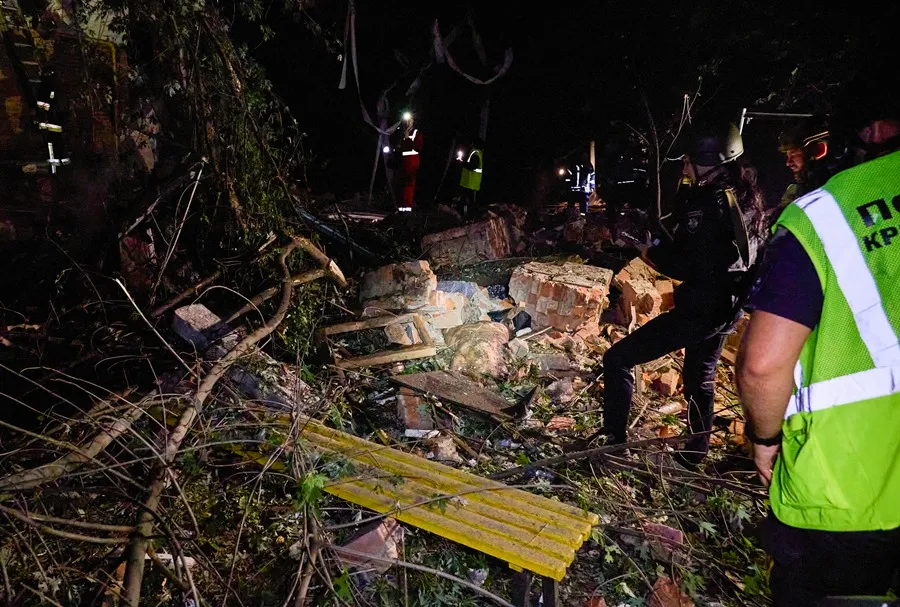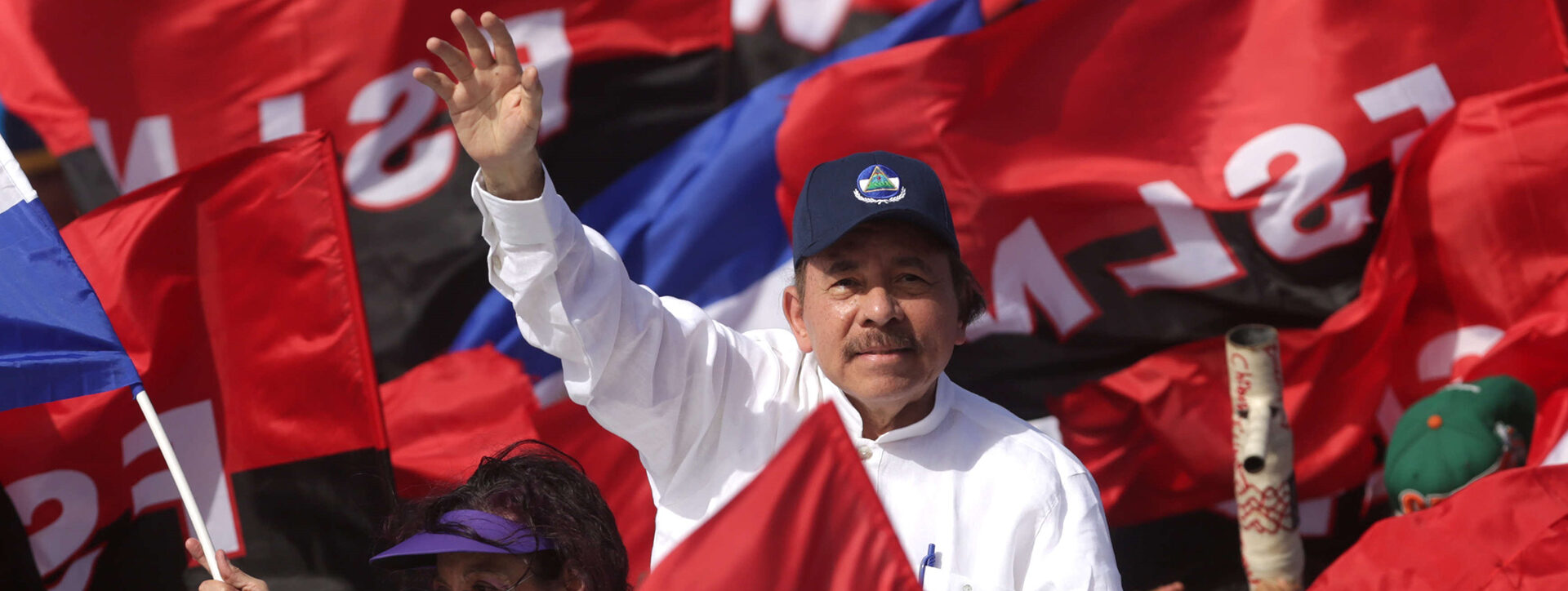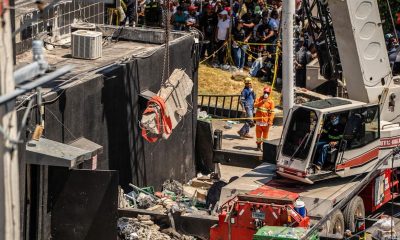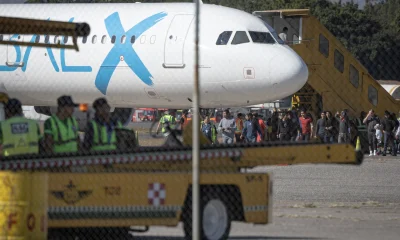International
Ukraine launches counterattacks in Kharkov while trying to contain the Russian attacks in Donetsk

Ukrainian troops defending the north of the Kharkov region are counterattacking after managing to stop the Russian advance in the area near the Russian-Ukrainian border.
Meanwhile, Russian forces remain pressured on different segments of the front in the eastern region of Donetsk and also in the south.
“The fighting continues near Liptsi and between Gliboke and Lukiantsi, as well as the assaults near and inside Vovchansk,” reads the latest bulletin of the Center for Defense Strategies in Kiev, which also states that “the Armed Forces of Ukraine counterattacked near Vovchansk and Staritsia.”
All these localities are located on the two axes opened by Russia in the cross-border offensive that its troops launched in the middle of last month against the Kharkov Oblast, which is still subjected to constant Russian airstrikes that hit the homonymous regional capital with special hard.
Meanwhile, the Institute for the Study of War (ISW) in Washington collects in its report this Monday “recent” Russian advances “near Vovchansk” and in the surroundings of the occupied cities of Avdivka and Donetsk, capital of the homonymous region of eastern Ukraine.
The ISW has also confirmed a Russian “marginal” advance in the town of Krinki, located on the eastern shore of the Dnipro River in the southern region of Kherson. Ukraine has established on that margin of the final stretch of the river a beachhead that Russia is trying to destroy with constant attacks.
The pressure that Russia continues to exert on the entire front is accompanied by a very high number of casualties, according to the daily balances offered by the Ukrainian General Staff.
In the past 24 hours alone, Russian forces recorded, between dead and wounded, 1,270 casualties of soldiers along the contact line. Until the opening of a new front in Kharkov last month, the number of Russian casualties did not usually cross the threshold of a thousand, something that now happens practically daily.
Regarding the losses of military material, Ukraine managed to destroy 14 enemy tanks and 47 artillery systems during the last day.
Kiev hopes to be able to completely stabilize the front with the new US aid in weapons and ammunition that it began to receive weeks ago.
More than a dozen allies have confirmed in recent days that they will allow Ukraine to hit military targets located in the territory of the Russian Federation, which could enable Ukraine to neutralize in origin many of the attacks that the Russians launch from their own territory against border regions such as Kharkov.
Central America
Senator Van Hollen Meets with Deported MS-13 Member in El Salvador; Trump and Bukele React

U.S. Democratic Senator Chris Van Hollen, representing the state of Maryland, held a meeting in El Salvador with deported MS-13 gang member Kilmar Ábrego García, a member of the criminal group classified by the U.S. government as a terrorist organization.
“Kilmar Ábrego García, miraculously resurrected from the ‘extermination camps’ and ‘torture chambers,’ now sipping margaritas with Senator Van Hollen in the tropical paradise of El Salvador!” wrote President Nayib Bukeleon X (formerly Twitter), sharing photos of Van Hollen, Ábrego García, and a lawyer sitting together at a Salvadoran hotel.
The deported gang member is seen wearing a plaid shirt and a flat-brimmed cap, seated at a table with glasses and coffee cups. The senator also shared images of the meeting on his own social media accounts.
Bukele reaffirmed that Ábrego will remain in El Salvador and will not be returned to the United States.
“Now that his health has been confirmed, he has earned the honor of remaining under the custody of El Salvador,” Bukele added.
Former U.S. President Donald Trump criticized the senator’s meeting with Ábrego on Truth Social, calling Van Hollen “a fool” for advocating for Ábrego’s return to the U.S.
International
Pope Francis Appears for Easter Blessing, Calls for Peace and Religious Freedom

Pope Francis, still recovering from pneumonia, appeared on the balcony of St. Peter’s Basilica in the Vatican on Easter Sunday and, with a faint voice, wished a “Happy Easter” to the thousands of faithful gathered to celebrate the Resurrection of Christ.
A month after being discharged from a lengthy hospital stay, the presence of the 88-year-old pontiff had remained uncertain, with the Vatican not confirming his attendance ahead of time.
Eventually, the pope made a brief appearance in a wheelchair shortly after 12:00 p.m. (10:00 GMT) to deliver his traditional “Urbi et Orbi” blessing (“to the city and to the world”).
Although no longer wearing an oxygen cannula, the Argentine Jesuit relied on a close aide to read his Easter message, which touched on major global conflicts.
Francis condemned the “dramatic and unworthy humanitarian crisis” in Gaza and called for a ceasefire, while also expressing concern over the “growing climate of antisemitism spreading across the globe.”
He further emphasized the importance of religious freedom and freedom of thought, stating that without mutual respect, “peace is not possible.”
International
Thousands rally nationwide against Trump’s threat to U.S. democracy

Thousands of protesters gathered on Saturday (April 19, 2025) in major cities like New York and Washington, as well as in small communities across the United States, in a second wave of demonstrations against President Donald Trump. The crowds denounced what they view as growing threats to the country’s democratic ideals.
In New York City, demonstrators of all ages rallied in front of the Public Library near Trump Tower, holding signs accusing the president of undermining democratic institutions and judicial independence.
Many protesters also criticized Trump’s hardline immigration policies, including mass deportations and raids targeting undocumented migrants.
“Democracy is in grave danger,” said Kathy Valyi, 73, the daughter of Holocaust survivors. She told AFP that the stories her parents shared about Adolf Hitler’s rise to power in 1930s Germany “are happening here now.”
In Washington, demonstrators voiced concern over what they see as Trump’s disregard for long-standing constitutional norms, such as the right to due process.
-

 International5 days ago
International5 days agoArsenal stun Real Madrid at the Bernabéu to reach Champions League semifinals
-

 Central America4 days ago
Central America4 days agoNicaraguan Exiles to Mark 7th Anniversary of 2018 Protests with Global Commemorations
-

 International4 days ago
International4 days agoDominican ‘False Hero’ Arrested for Faking Role in Nightclub Collapse That Killed 231
-

 International3 days ago
International3 days agoACLU seeks emergency court order to stop venezuelan deportations under Wartime Law
-

 International5 days ago
International5 days agoBogotá residents line up for yellow fever vaccine amid national alert
-

 International5 days ago
International5 days agoDeSantis’ immigration crackdown sparks alarm in Venezuelan Communities in Doral
-

 Central America3 days ago
Central America3 days agoUN complaint filed against Costa Rica over detention of migrant children
-

 International5 days ago
International5 days agoMexico refuses to restore ties with Ecuador while Noboa remains in office
-

 International1 day ago
International1 day agoThousands rally nationwide against Trump’s threat to U.S. democracy
-

 Central America15 hours ago
Central America15 hours agoSenator Van Hollen Meets with Deported MS-13 Member in El Salvador; Trump and Bukele React
-

 International15 hours ago
International15 hours agoPope Francis Appears for Easter Blessing, Calls for Peace and Religious Freedom















